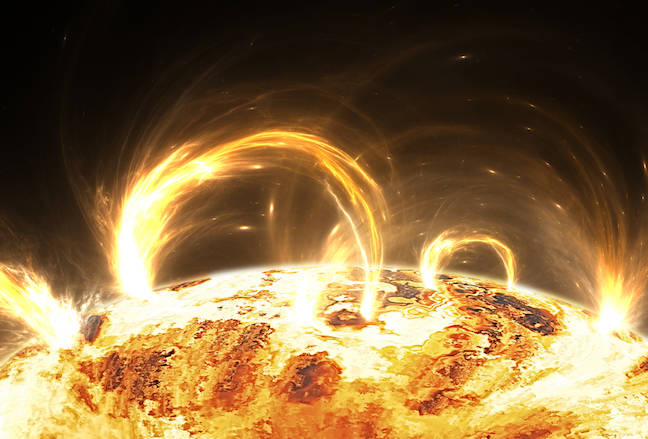Researchers have found Starlink’s efforts to mitigate the effects of solar storms can create degraded performance that persists for a day or more after geomagnetic conditions ease.
That finding appears in a recent paper titled A Deep Dive into the Impact of Solar Storms on LEO Satellite Networks [PDF] that considers four major coronal mass ejections (CMEs) that occurred between May and October 2024.
It’s well known that CMEs see the Sun belch out charged plasma that, when it comes into Earth’s immediate neighbourhood, can create solar storms that disturb magnetic fields and disrupt radio communications.
Solar storms also heat Earth’s upper atmosphere, expanding it just enough that low-Earth-orbit satellites like Starlink’s fleet of broadband birds feel a little more atmospheric drag and can lose some altitude.
When that happens, the paper suggests “Starlink responds by temporarily raising the affected satellites above their nominal altitude.”
SpaceX’s broadband biz typically lets those sats return to their original altitude within a day or two. But according to the paper: “This corrective action triggers a cascading effect, with orbital adjustments propagating across neighboring satellites in both spatial and temporal dimensions. Full stabilization of the orbit often takes 3–4 days. These dynamic adjustments can disrupt satellite links and routing paths, contributing to performance issues such as a sustained increase in round-trip time.”
“This finding raises fundamental questions about the suitability of today’s autonomous constellation management during extreme space weather events,” the paper adds. “The self-driving algorithms, optimized for normal operations, may inadvertently amplify storm impacts by triggering chains of orbital adjustments.”
Another of the paper’s findings is that not all satellites in a broadband constellation are equally vulnerable to solar storms. Satellites at high latitudes and those most exposed to the sun during storm peaks experience the most significant orbital decay.
The study drew data from 76 RIPE Atlas probes connected to the Starlink autonomous system (AS 14593), which ping the network’s assets every four minutes, plus other datasets that describe the position of satellites, and the intensity of solar storms.
While the study found degraded performance during solar storms, Starlink kept operating during the four events the paper considers. The authors suggest their study, and other work on the performance of space broadband, is nonetheless necessary because such services have become an important part of the global internet, especially in remote areas and disaster zones. ®

